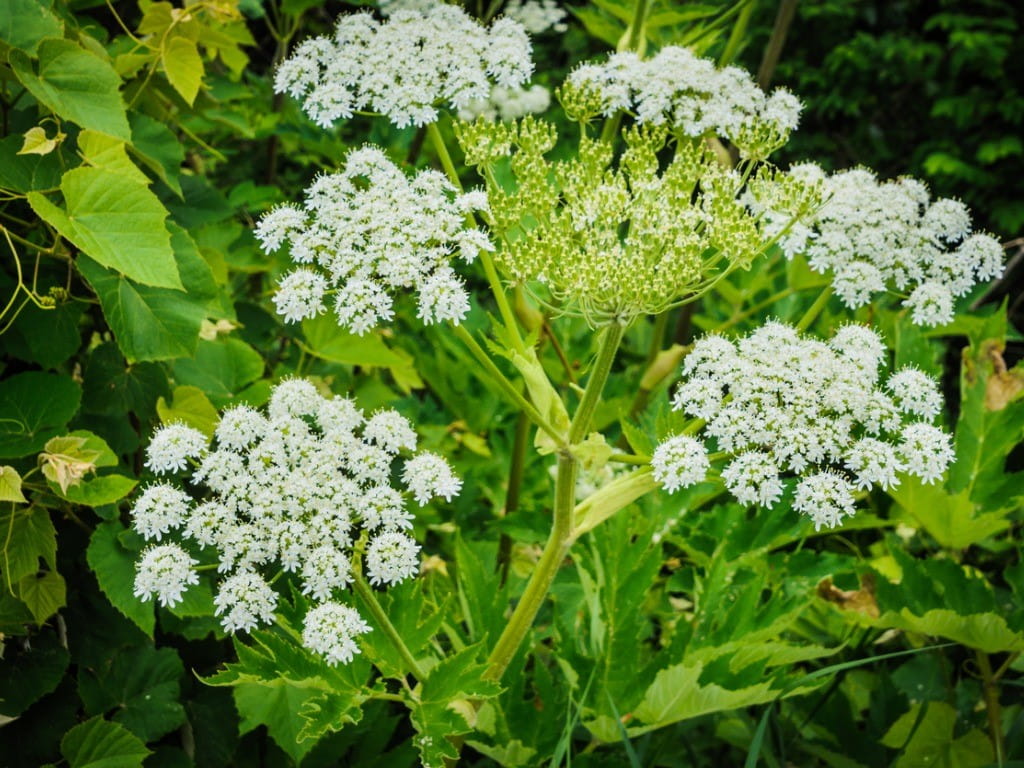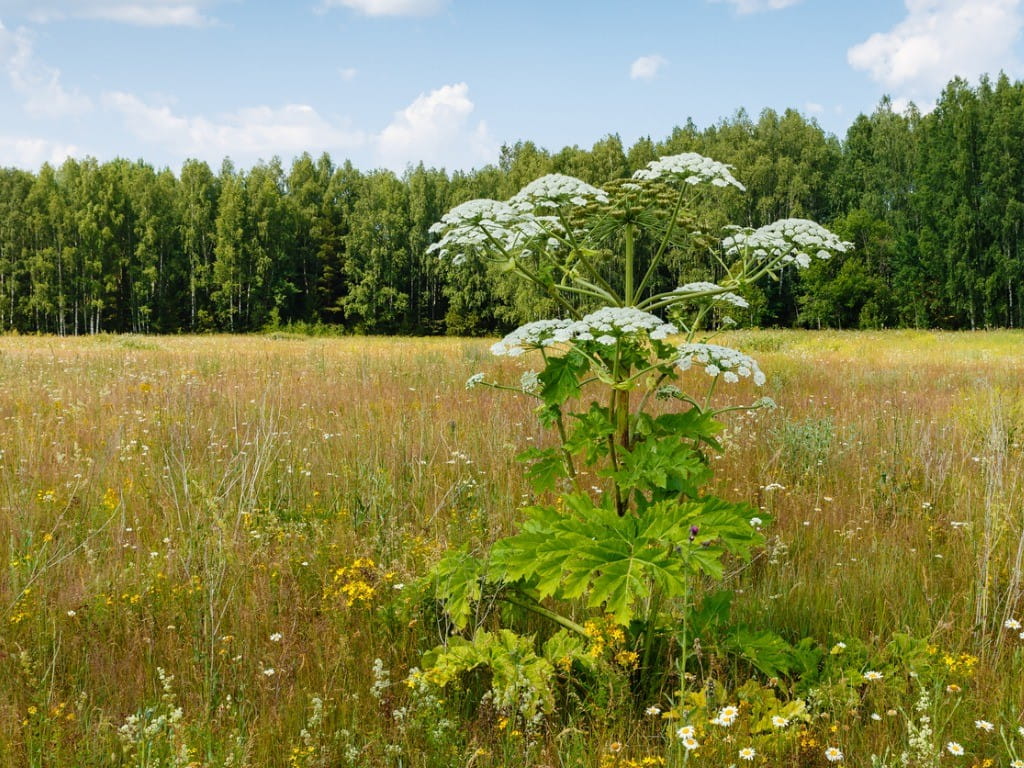Giant Hogweed and Its Toxic Cousins

The Bottom Line
Giant hogweed is the most well-known species of the genus Heracleum, a group of plants whose sap contains a chemical that can be very harmful if it touches the skin. Although the concentration of the toxic component can vary from plant to plant, it is best to avoid contact with any species in this group of plants to prevent potential injury!

The Full Story
Heracleum is the genus of a group of plants that are found across Europe, Asia, and North America. Plants of the genus are not recognized to have any beneficial medicinal properties. In fact, these plants can be harmful if mishandled.
Heracleum plants can be either biennial (a 2-year life cycle) or perennial (a 3-year or longer life cycle), and their distribution varies across different regions of the world. Some of the more commonly known species include:
- Heracleum mantegazzianum (giant hogweed, giant cow parsnip, cartwheel flower)
- Heracleum maximum (cow parsnip)
- Heracleum sosnowskyi (Sosnowsky's hogweed)
- Heracleum persicum (Persian hogweed)
- Heracleum sphondylium (common hogweed)
The most notoriously invasive and hazardous species is Heracleum mantegazzianum. This species is native to the Caucasus region but was introduced to the US as an ornamental plant. Giant hogweed is much larger and taller than the other Heracleum species, growing to be 12-15 feet tall and 3 feet wide. It has characteristic hollow, reddish-purple colored stems and produces large, umbrella-shaped clusters of white flowers.
Heracleum plants have toxic chemical compounds called furanocoumarins in their sap, stems, leaves, and fruits. Physical contact with the plant makes skin more sensitive to ultraviolet light and can result in phototoxic dermatitis (an inflammatory skin reaction induced by sunlight). Symptoms range from mild redness and irritation to blisters, burns, and scarring. Additionally, there have been cases of eye irritation and severe eye injury from contact with the eyes. Reactions can occur within 24 hours after contact with the plant, with a peak sensitivity occurring within 3 days of exposure. In severe cases, symptoms can persist for weeks to months. Due to the potential for severe and persistent skin irritation that can occur after to exposure to Heracleum plants and sunlight, it is best to avoid contact with these plants whenever possible.
Because of its invasive nature and harmful effects, giant hogweed is considered a public health hazard and is classified as a Federal Noxious Weed under the Plant Protection Act, which prohibits importation of the plant into the US and its transportation across state lines without a permit. In North America, giant hogweed is most common along riverbanks, in open woodlands, and in abandoned pastures.
If you are worried about exposure to a Heracleum plant, check the webPOISONCONTROL® online tool for guidance or call Poison Control at 1-800-222-1222. Whether you log on or call, expert assistance is available 24 hours a day.
Kristina Yee, PharmD, BS
Poisoned?
Call 1-800-222-1222 or
Prevention Tips
- If you come across a plant that resembles Heracleum, avoid contact!
- If you come into contact with any part of the plant, immediately wash the area with soap and water and avoid direct exposure to sunlight.
- Heracleum is not an appropriate plant for landscaping.
This Really Happened
An ER physician called Poison Control about a 28-year-old woman who had been farming in Sonoma County, California. She came into contact with giant hogweed, borage, calendula, and arugula. That evening, she developed a burning sensation in her hands and came to the ER with skin irritation and blisters. Poison Control discussed the symptoms with the physician and determined that they were likely due to the giant hogweed and made recommendations to provide care with topical steroids, oral antihistamines, and examination by a dermatologist. During a follow-up call by Poison Control the next day, the woman reported reduced swelling after use of a topical steroid.For More Information
References
Bhowmik PC, Chandran RS. Biology, ecology, distribution and current status of Heracleum mantegazzianum Sommier&Levier. J Crop and Weed 2015;11(1):1-17.
Bruneton J. Toxic plants dangerous to humans and animals. Lavoisier; 2000, p. 116.
Karimian-Teherani D, Kinaciyan T, Tanew A. Photoallergic contact dermatitis to Heracleum giganteum. Photodermatol Photoimmunol Photomed. 2008 Apr;24(2):99-101.
Klimaszyk P, Klimaszyk D, Piotrowiak M, Popiołek A. Unusual complications after occupational exposure to giant hogweed (Heracleum mantegazzianum): a case report. Int J Occup Med Environ Health. 2014 Jan;27(1):141-4.
Lagey K, Duinslaeger L, Vanderkelen A. Burns induced by plants. Burns. 1995 Nov;21(7):542-3.
McViety J, Swindells K, Boon R, Mughal Z. The day of the triffids? Emerg Med J. 2010 Nov;27(11):883-4.
Poisoned?
Call 1-800-222-1222 or
Prevention Tips
- If you come across a plant that resembles Heracleum, avoid contact!
- If you come into contact with any part of the plant, immediately wash the area with soap and water and avoid direct exposure to sunlight.
- Heracleum is not an appropriate plant for landscaping.
